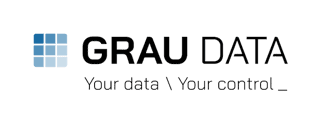

Ans: Thanks for having me, Rich! At GRAU DATA, we’re addressing one of today’s most critical challenges: managing the explosive growth of unstructured data. Our mission is to tackle these challenges and help organizations prepare for the exponential data growth expected over the next decade.
In my role, I wear two hats. As Chief Data Evangelist, I focus on educating the market about the transformative potential of metadata in modern data management. Metadata is often the key to unlocking insights from complex datasets. As Head of U.S. Operations and International Sales, I’m dedicated to expanding the global reach of our solutions, like MetadataHub, which empowers organizations to unlock the full value of their unstructured data by capturing its content and context.
Ans: MetadataHub is a game-changer for organizations drowning in unstructured data. Whether coming from sensors, microscopes, or satellites, the challenge isn’t just storing all that unstructured data—it’s figuring out how to use it. That’s where MetadataHub shines.
It connects directly to your storage systems—like SMB, NFS, and S3—and automatically extracts all types of metadata, including the critical embedded metadata that tells you the content and context of your files. MetadataHub can uniquely open files, including application-specific files, to extract the content and contextual value needed to derive insights for analytics, AI, and training LLMs. Embedded metadata is often overlooked or not easily accessible, but it provides the crucial content and context that make unstructured data truly actionable.
Think of MetadataHub as a dynamic, searchable repository that acts as a smart proxy for your unstructured data, eliminating the need to constantly recall full files from storage. It integrates seamlessly with modern tools like Snowflake, Databricks, Jupyter Notebooks, KNIME, and LLMs, automating data provisioning to feed data pipelines. By delivering rich metadata without moving the file, MetadataHub accelerates decision-making, streamlines workflows, and maximizes the value of your data. For industries like life sciences, HPC, or manufacturing—where petabytes of research data or billions of sensor readings are the norm—MetadataHub isn’t just helpful; it’s transformative.
Ans: Leveraging embedded metadata with MetadataHub unlocks a wide range of benefits for end users. By extracting critical insights directly from files, MetadataHub provides the content and context organizations need to optimize operations and enhance decision-making. For organizations struggling with scattered storage systems or siloed data, this means reduced costs, better data quality, and improved accessibility.
The most immediate impact users see is in data preparation time. By automating metadata extraction, we’ve managed to reduce data preparation time by up to 90%. This automation means researchers and IT administrators can focus on applying their expertise rather than spending countless hours organizing and preparing data. They get faster results and can access the needed data without waiting for manual processing.
Resource efficiency is another crucial benefit. MetadataHub delivers metadata directly to applications without moving entire files, dramatically reducing infrastructure demands. Since the extracted insights are typically 1,000 times smaller than the original file, we see up to 30% reduction in network, CPU/GPU, and storage loads.
This efficiency translates directly into cost savings. Our system enables intelligent storage decisions based on a file’s actual content and business value, rather than simple metrics like age or access history. When combined with data movers and orchestration tools, MetadataHub automates workflows and facilitates smarter data migration. Organizations can move data from expensive storage to archives based on true business value, reducing storage costs by up to 30%.
The impact on data accessibility is equally significant. MetadataHub breaks down traditional data silos that often plague large organizations. Users can seamlessly discover and access data across the entire organization, regardless of where it’s stored. This global accessibility ensures that valuable insights don’t remain trapped in isolated systems.
Perhaps most importantly for today’s organizations, MetadataHub makes data AI-ready. It transforms raw data into actionable insights that can be immediately used in analytics, artificial intelligence, and machine learning workflows. These insights are formatted and structured to work seamlessly with the tools and applications that modern data scientists and analysts rely on daily.
Ans: Our ideal customers are organizations managing massive volumes of unstructured data. This includes scientific and research institutions such as aerospace agencies, pharmaceutical companies, life sciences organizations, national labs, universities, high-performance computing facilities, and manufacturers. These organizations often generate large datasets from specialized equipment like electron microscopes, genomic sequencers, and satellite imaging systems.
MetadataHub is also an excellent fit for organizations with extensive data archives, particularly those utilizing tape archives or deep storage systems. It enables these customers to capture critical insights before files are stored cost-effectively, ensuring that data remains actionable even in long-term storage.
Additionally, MetadataHub is invaluable for any organization with unstructured data seeking to enhance data quality for AI and large language model (LLM) training, making their data more usable and impactful for advanced analytics and machine learning workflows.
Ans: The journey to reliable AI begins with data quality. When organizations work with poor-quality data, they inevitably face unreliable AI outputs, slower workflows, and missed opportunities. We’ve found that the key to solving this challenge lies in embedded metadata – those crucial details hidden within files that provide essential context and content for AI applications.
Making unstructured data truly AI-ready requires addressing three fundamental challenges. First, there’s the complexity of managing diverse file types. Unstructured data comes in countless formats, each with its own unique structure and complications that make standardization challenging. Second, organizations must handle increasingly massive data volumes. We’re talking about processing millions or even billions of files efficiently – a scale that demands robust automation.
The third and most critical challenge involves extracting embedded metadata effectively. Modern scientific instruments and sensors generate files that are rich with metadata, often containing hundreds or thousands of vital elements. These include experimental conditions, equipment settings, and measurement parameters – all crucial details that determine the quality and usability of the data for AI applications.
MetadataHub tackles these challenges through automated processing at scale. Our system harmonizes both content and context, making data immediately actionable regardless of its source or format. We place special emphasis on data provenance – tracking the complete history of data from its origin through every transformation. This comprehensive tracking builds the trust, repeatability, and accountability that are absolutely essential for successful AI and machine learning applications.
Ans: Tape archives often come with “performance anxiety” due to the latency in recalling files. However, you don’t need the entire file in most cases—just the insights within it.
MetadataHub solves this by acting as a proxy, capturing critical metadata, and making it instantly accessible. This ensures that all content and context are readily available for AI workflows or applications without the need to recall files from the archive unless absolutely necessary.
This approach creates an “active archive,” where critical insights are captured immediately, enabling files to move to archival storage sooner. This ensures organizations can save costs without losing quick access to the necessary data. These insights remain accessible, enabling organizations to migrate files off expensive performance storage sooner, saving costs while ensuring seamless access to the necessary data, regardless of where the file resides.
For example, the Zuse Institute manages 1 PB of high-performance SSD storage and over 200 PB on tape. By using MetadataHub, they capture critical metadata from files on performance storage, providing instant access to insights without recalling the original files. Once the metadata is captured, Zuse migrates the files to secure, low-cost archival solutions—enterprise tape—while retaining immediate access to actionable metadata.
Ans: Great question! The Data Landscape Report is about solving one of the biggest challenges our customers face—”Where is my data?” It provides a clear, 360-degree view of all your unstructured data, no matter where it’s stored—on-premises, in the cloud, or across vendor storage systems like SMB, NFS, and S3.
We hear this from organizations of all sizes. They’ve got storage scattered between on-site systems and the cloud, but there’s no single view to show where everything is or how it’s being used. That’s where the Data Landscape Report comes in—it consolidates all that information into one place.
Now, this isn’t just about tracking file counts or sizes. The report delivers actionable insights, such as file types, data age, usage patterns, and storage efficiency. These insights empower organizations to optimize their data management in several ways. Teams can intelligently move data to the most cost-effective storage tiers, ensuring efficient resource utilization. The report’s comprehensive view makes data migrations straightforward and seamless, eliminating the guesswork typically involved in these projects. Additionally, it strengthens compliance and governance efforts by providing clear visibility into data provenance and history.
What sets the Data Landscape Report apart is its speed—customers can see results within hours, making it an invaluable tool for quickly gaining clarity over their data landscape.

Ans: Oregon is my year-round playground. In the summer, I’m often mountain biking through scenic trails or adventure riding on rugged backroads. When winter comes, I swap the wheels for a snowboard and hit the slopes. Exploring Oregon’s landscapes keeps me energized and inspires the creativity and problem-solving approach I bring to GRAU DATA, helping us tackle some of the most complex data challenges out there.
For more information on MetadataHub, visit GRAU DATA’s website or http://Moremetadata.com
Additional resources:
How Data’s DNA Drives Innovation: Transform how your organization discovers, analyzes, and innovates.
